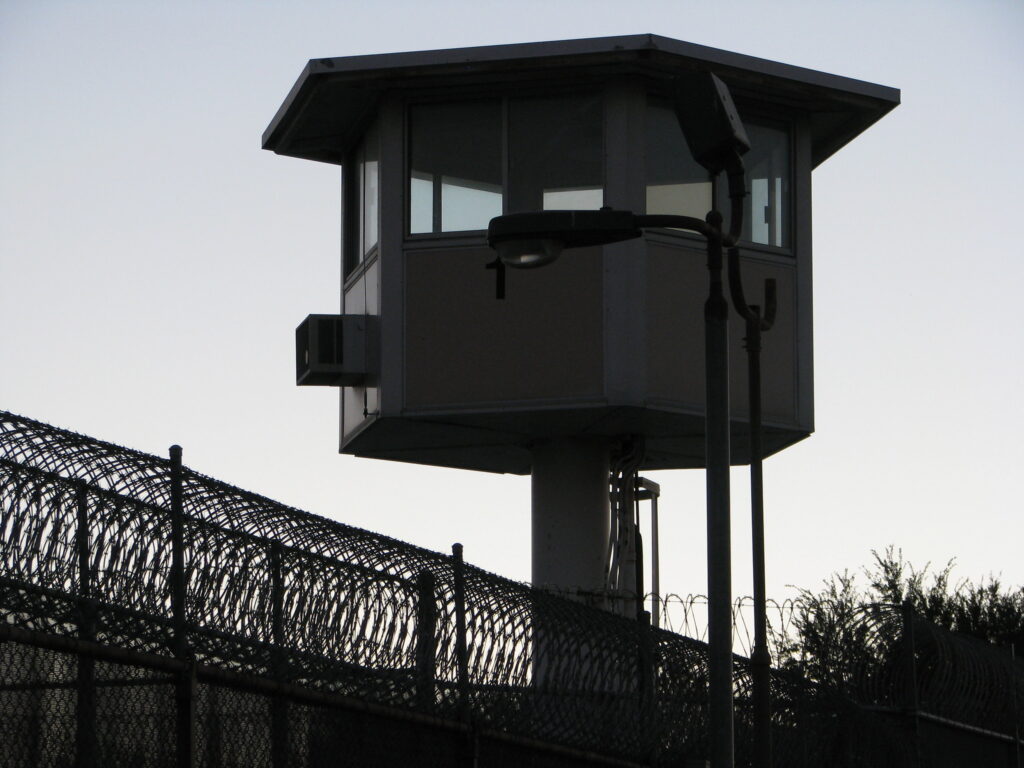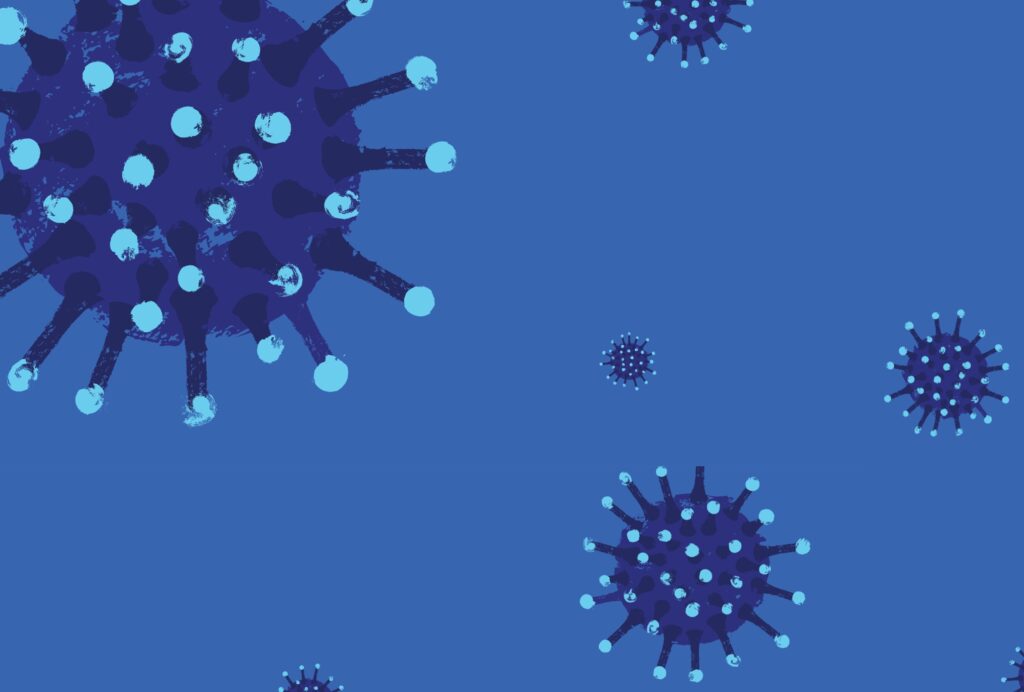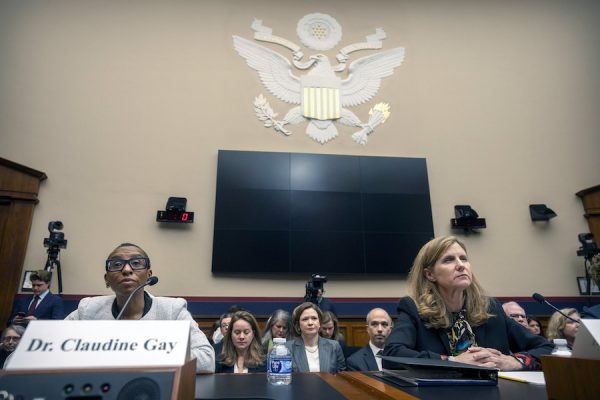COVID-19 spreads where people congregate. With rare exception, it preys on the weakest among us—the elderly, the sick, the infirm—which is why it is so dangerous in prisons. A disproportionate number of inmates are elderly, unwell, or both, and places of detention are often overcrowded and always unsanitary. Several of the largest outbreaks in the country are in prisons.
States have developed guidelines to limit the spread of COVID-19 in their prisons, but most have resisted the most morally urgent solution: let people go, by the hundreds of thousands.
The public health threat is not unique to these facilities; those in nursing homes, for instance, face a similar risk. But prisons and jails are unique in one respect: the state forcibly brings people to these sites, holds them against their will, and deprives them of the ability to take the precautions recommended by public health officials. This obligates the state, morally and legally, to mitigate the risk. As the Supreme Court has warned, “having stripped [prisoners] of virtually every means of self-protection and foreclosed their access to outside aid, the government and its officials are not free to let the state of nature take its course.”
Yet the official response to the virus in prisons has been positively anemic. While many states have developed guidelines intended to limit the spread of the disease in their prisons, most have thus far resisted the most morally urgent solution: let people go. Not by the hundreds. Not by the thousands. Hundreds of thousands of inmates should be released from prison.
We stumble as soon as we ask the question, “Who is, but should not be, in prison?” Even before COVID-19, we had only one widely available narrative that gave us a ready answer to this question—the one supplied by Michelle Alexander’s The New Jim Crow (2010), the most influential book on criminal justice in the twenty-first century. By Alexander’s reasoning, the bulk of those who shouldn’t be in prison are the victims of the war on drugs, most of whom were black and brown, low-level, non-violent offenders. If we could only release these people, the problem of mass incarceration would be solved—and the crisis of COVID-19 averted.
We simply don’t send that many low-level, nonviolent offenders to prison. Releasing the few exceptions will not slow the humanitarian train wreck of COVID-19.
Yet as many have observed, Alexander’s core contention is simply mistaken. We have over 1.5 million people in our prisons alone, and another 630,000 in jails, which together yields the highest per capita rate of imprisonment in the world. (One of the primary drivers of that rate is the inordinately long sentences we impose.) But the great majority of prisoners in this country—17 of every 20—are held by the states, and most state prisoners have been convicted of a violent crime. Only about 15 percent are there for a drug crime, and most of those were convicted of trafficking or possession with intent to distribute. It’s hard to know exactly how many people in prison are low-level, non-violent drug offenders, but one oft-cited study from 2004 put the number somewhere between 1 percent and 2 percent of the imprisoned population, or somewhere between 15,000 and 30,000 people.
The number has almost certainly gone down in the years since those estimates were made, partly as a result of lower crime rates overall, and partly as a result of prior efforts over the past decade to release the few prisoners who fit the bill. In November 2019, for instance, Oklahoma Governor Kevin Stitt commuted the sentences of approximately 500 inmates, who were described by the Executive Director of the Pardon and Parole Board as “low-level, nonviolent offenders.” This represented about 2 percent of the Oklahoma prison population. In short, we simply don’t send that many low-level, non-violent offenders to prison, whether for drug or property crimes, and releasing the few exceptions who prove the rule will not slow the humanitarian train wreck of COVID-19.
Unfortunately, that is the only narrative available to elected officials who are trying to address COVID-19 in prison. Recently, for instance, Tom Wolf, the governor of Pennsylvania, issued an executive order directing the department of corrections to identify suitable candidates for release, noting in the preamble that “minimizing the number of individuals in correctional facilities reduces the risk of rapid transmission of COVID-19 between residents and staff . . . by better allowing for the institution of social distancing and other mitigation efforts.”
To achieve this laudable goal, Wolf, a Democrat who considers himself a criminal justice reformer, ordered the department to identify “vulnerable” inmates who were eligible for release within the next twelve months. By “vulnerable,” he meant anyone who is at risk based upon age, is pregnant, has an autoimmune disorder, or suffers from a “serious chronic medical condition” such as diabetes or heart disease. He also asked the department to identify inmates who were eligible for release within the next nine months, regardless of vulnerability. From this fraction, Wolf then excluded anyone, regardless of how vulnerable or how imminent their release, serving time for a crime involving violence, personal injury, a deadly weapon, or drug trafficking, as well as anyone who has been denied parole or has an outstanding misdemeanor or felony warrant. No matter how old their conviction may have been and regardless of their current behavioral profile, if Pennsylvania inmates fall into one of these other categories, they are not eligible for release under Wolf’s order.
The problem with the prevailing narrative is not simply that it directs our attention to a population that doesn’t exist. It also reinforces a prejudice that prevents us from finding real solutions.
Because of these carve-outs, the order will do practically nothing. The state estimates that 1,500 to 1,800 inmates come within the literal terms of the order, though it projects that fewer will ultimately be released. Pennsylvania incarcerates a little more than 44,000 inmates, meaning Wolf’s plan will reduce Pennsylvania’s prison population by about 3 to 4 percent. According to the Pennsylvania Department of Corrections, Pennsylvania’s prisons at the end of March 2020 were operating at 94.5 percent of capacity, and 10 of the 25 facilities in the state were at or above 100 percent of capacity. Wolf’s order will not make a dent in the COVID-19 crisis in Pennsylvania prisons, though it at least improves over the plan proposed by the Republican-controlled state legislature, which wanted to cap releases at 450.
The response in Pennsylvania is typical. In Georgia, for instance, the Board of Pardons and Paroles will consider releasing “individuals currently serving for a non-violent offense(s) who are within 180 days of completing their prison sentence.” The state estimates this may lead to the release of up to 200 inmates. Georgia incarcerates roughly 50,000 people, which means its response to the COVID crisis will reduce the prison population by less than half of 1 percent. New York has said it will release about 1,100 “low-level technical parole violators,” many of whom are held in county jails. As of April 1, 2020, New York had a prison population of nearly 43,000 inmates, meaning its response will reduce the incarcerated population by about 3 percent. (A technical violation means the person ran afoul of one or more conditions of his parole, but did not commit a new crime. Missing a scheduled meeting with a parole officer, for instance, is a technical violation, but not a crime.)
Reducing prison populations by a couple percentage points is like asking a couple people in the back row of an overcrowded theater to leave, and then telling everyone left behind to spread out.
The problem with the prevailing narrative is not simply that it directs our attention to a population that doesn’t exist. Far more importantly, it reinforces a prejudice that prevents us from finding real solutions. When it comes to prisoners, many people inexplicably deny what all of us know to be true: people change. It is the lesson of universal experience, shared and recognized by all who have entered at least their fourth decade. Yet for some reason, we persist in believing it is not true for a person who has committed a serious offense. Instead, we imagine that a person in prison is, irrevocably, the crime they committed.
Even the language we use conditions us to think in these terms. We say a person who committed a robbery is a robber, a person who committed a murder is a murderer. We do not, in other words, say what is true—that a person who committed a robbery is . . . a person who committed a robbery. Note that my contention is somewhat different from the one expressed by advocates like Sister Helen Prejean and Bryan Stevenson, who are friends, and who caution us to remember that a person is more than the worst thing they have done. Though that is true, my point is that, whoever a person may have been years ago, they are almost certainly an entirely different person now.
When it comes to prisoners, many people inexplicably deny what all of us know to be true: people change. We imagine that a person in prison is, irrevocably, the crime they committed.
To be sure, officials are apt to avoid this mistake in carefully crafted remarks. In his executive order, Wolf excluded people who had been “committed for” a crime of violence. But this just makes the unofficial remarks that much more telling. In a press release announcing the move, Wolf said, “I am pleased to direct the Department of Corrections to begin … to release … non-violent inmates,” as though a person convicted of a violent crime could never be nonviolent, regardless of the time that has passed or the changes he has made in his life. Our current narrative reinforces this bizarre way of thinking. It chains a person to the offense he committed, however long ago. He is and will always be the crime he committed. If it was a crime of violence, he is violent; if it was not, he is not.
Yet we know this is simply not true. Violence is a young man’s game. In the modern era, the likelihood of involvement in violence is at its highest around age twenty-five. The likelihood of involvement in a homicide, for instance, peaks in the mid-twenties and then declines dramatically. As of 2010, about 90 percent of participants in a homicide were under thirty-five, and 95 percent were under forty-five. Other violent crime, including aggravated assault, follows a comparable pattern. For crimes such as burglary and robbery, the age of greatest involvement is even earlier, peaking in mid to late adolescence and then declining very rapidly. There are things we know not because they can be proven with the certainty of a mathematical theorem, but because we have seen them happen over and over again since the memory of man runneth naught. With the same certainty, we know that, as a rule, people age out of violent crime.
Older offenders are also much less likely to recidivate. A study by the Osborne Association found that nationwide, more than 43 percent of all released individuals recidivate within three years, though only seven percent of those aged 50–64, and only 4 percent of those over 65, return to prison for new convictions—the lowest rates among all incarcerated age demographics.
If we want to provide for social distancing in prison, the surest, safest way is to release everyone over the age of fifty. Seven years ago, that amounted to nearly a quarter million inmates. Because older inmates are the fastest growing segment of the prison population, the total is probably closer to 300,000 now. No carve-outs, no exceptions, no excuses.
We invest the detention of those convicted of violent crimes with a deep moral and psychological purpose, freighting it with meaning far beyond what is necessary to keep society safe.
But I wouldn’t stop there. I’d also release anyone who has made the turn. This is the expression I use to describe the people who have thoroughly abandoned their prior way of navigating the world. In the course of a long career as a criminal defense and civil rights lawyer, and as someone who teaches college classes in prison, I have spent thousands of hours in state and federal prisons and met hundreds of men and women who look back on their past with a mixture of astonishment, revulsion, and regret. Many of them committed very serious crimes, but they will never run afoul of the law again. The person who entered prison simply no longer exists.
Prison officials understand this reality, just as they know who has and who hasn’t made the turn. I have often quizzed prison officials, asking how many of the inmates in their facilities could be immediately released without risk to public safety. The answer varies between a third and a half. As a former senior official at a maximum security prison in New York put it, “It’s not what you can say politically, but it’s the lifers, the long-timers.” And I’d release anyone who has served twenty years or more, regardless of their current age or crime of conviction, which would bring incarceration in line with historic and international norms.
The evidence that inmates change, like everyone else, has been recognized for centuries. Indeed, the close relationship between crime and age is so well known that it has been called “one of the brute facts of criminology.” Academics have studied it, advocates have written about it, and policymakers have ignored it. The crisis of COVID-19 brings their ignorance into stark relief, but so far, policymakers have persisted, preferring to hinge their response to the virus on the imaginary low-level, nonviolent offender. Why? To say the public demands it merely begs the question. Why is it so hard for so many to accept that people in prison, like people everywhere, change over time? Here, we leap from evidence to conjecture, but I think the answer helps explain why people find the narrative of The New Jim Crow so attractive.
To question this arrangement is to challenge something profound in American life.
It is the perennially irresistible allure of an easy solution, a quick fix. It is the little pill that promises to shed unwanted pounds while you sleep. The New Jim Crow offered a painless prescription: stop sending young black and brown men to prison for minor drug crimes. This simple step would end mass incarceration and reverse decades of racial injustice. And the step would be easy, since the crack epidemic had ended by the time the book appeared. Even more importantly, if we took this step, we could double down on everything else.
We could increase sentences for violent crimes, because that was not part of the problem. We could sentence more people to life in prison, because that was not part of the problem. We could keep hundreds of thousands of people in prison until they die, because that too was not part of the problem. The problem was the low-level, nonviolent offender. And best of all, since we were not in fact sending those people to prison—at least, not in any numbers—focusing our attention on them did not require that we actually do anything differently. Most importantly, we did not have to release a lot of people. In short, we can gaze sympathetically at the mental image of a young black or brown man languishing in prison for a trivial drug crime precisely because it is not real.
By contrast, those convicted of a violent crime are very real. They represent something precious to us. We are safe because they are gone. We are free because they are not. Their exile is our salvation. We invest their detention with a deep moral and psychological purpose, freighting it with meaning far beyond what is necessary to keep society safe. To question this arrangement is to challenge something profound in American life. To accept that they change like we change, that they regret as we regret, that they grieve as we grieve is to realize that there is no space between them and us but for the walls we built to shut them away. They are us, and we are them. That is the Rubicon we dare not cross.









